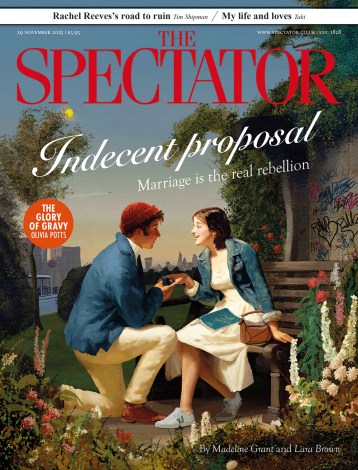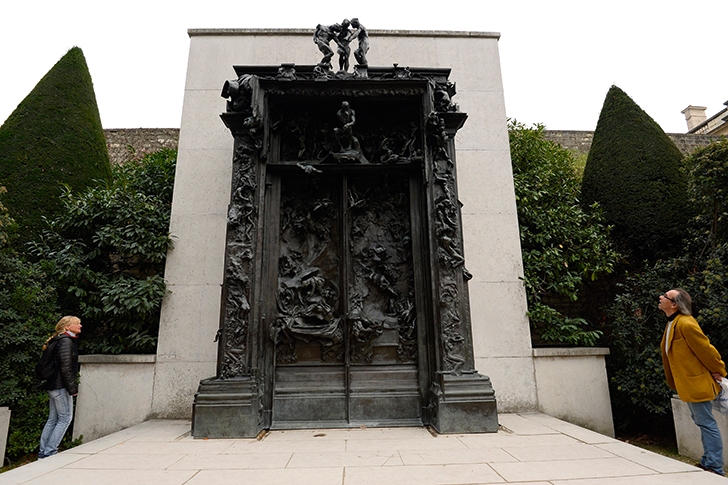The girl who posed for Auguste Rodin’s figure of Eve on the ‘Gates of Hell’ was, the sculptor said, a ‘panther’. She was a young Italian, pregnant, but barely showing. Not a professional artist’s model. He found the girls who modelled for the Academy painters too affected. He liked stretchers, yawners, fidgeters, jitterbug girls who couldn’t sit still.
His figures in plaster, bronze and marble have a pretzel suppleness. They do the splits, lie curled and foetal, fold at the waist, and crouch doubled like Atlas. His sibyls hold yoga poses. His prodigal son has a six-pack. A sketch might take only three, four, five charcoal or gouache strokes. Then: new pose, new page. He sought out dancers: Isadora Duncan, Carmen Damedoz — and Loie Fuller, who swirled her sleeves and skirts until she looked like a peony. He collected photographs of the Javanese dancers who performed at the Great Exhibition in Paris in 1889 and drew the Royal Cambodian dancing troupe on their state visit in 1906. He saw Vaslav Nijinsky dance the ballet L’Après-midi d’un faune in 1912 and invited the faun himself to his studio. A plaster was made of Nijinsky, like a Jack in the act of springing its box, but wasn’t cast until after Rodin’s death. He’s a fierce sort of faun with a hard face, high skull and tense limbs.
Rodin died 100 years ago, on 18 November 1917, but his figures are as lithe, slinky, expectant as when they were first made. Arms up, knees up, blood up, spirits up.
He chopped and changed body parts: this leg on that body, old head on new neck. He thought of these oddments as abattis, literally ‘giblets’. He collected fragments of antique sculptures and called them his ‘mutilated gods’. Sometimes he did away with the body altogether. His marble ‘Head of John the Baptist’ (1892) lies on a salver, fringe falling over the lip of the plate.
It’s a year for a trip to Paris for the Rodin Centenary Exhibition at the Grand Palais (22 March–31 July) and to the Musée Rodin; the painter and sculptor Anselm Kiefer has been given the run of the place (14 March–22 October). In the gardens of the museum you’ll find the panther-like Eve on the ‘Gates of Hell’ (1880–1890), arms protectively wrapped across her breasts, one of more than 300 sinning figures. When I saw her it was January, freezing, beginning to snow. It was strange to stand in coat and scarf and hat and gloves below Rodin’s inferno. Look also for Rodin’s ‘Monument to Victor Hugo’ (1890) in an attitude half death-of-Seneca, half mermaid-on-her-rock.
Rodin was fond of London, spending days sketching Assyrian gods and Parthenon horses ‘au British’ — at the British Museum. Within his lifetime, a cast of the ‘Burghers of Calais’ was bought by the National Art Collections Fund. The six gloomy burghers now rattle their chains in Victoria Tower Gardens. Rodin went often to the V&A and so admired Michelangelo’s ‘Young Slave’ in red wax that he asked that a prayer stool be put before it. Could Tate do the same for Rodin’s ‘The Kiss’? Lip-locked now since the turn of the last century.







Comments